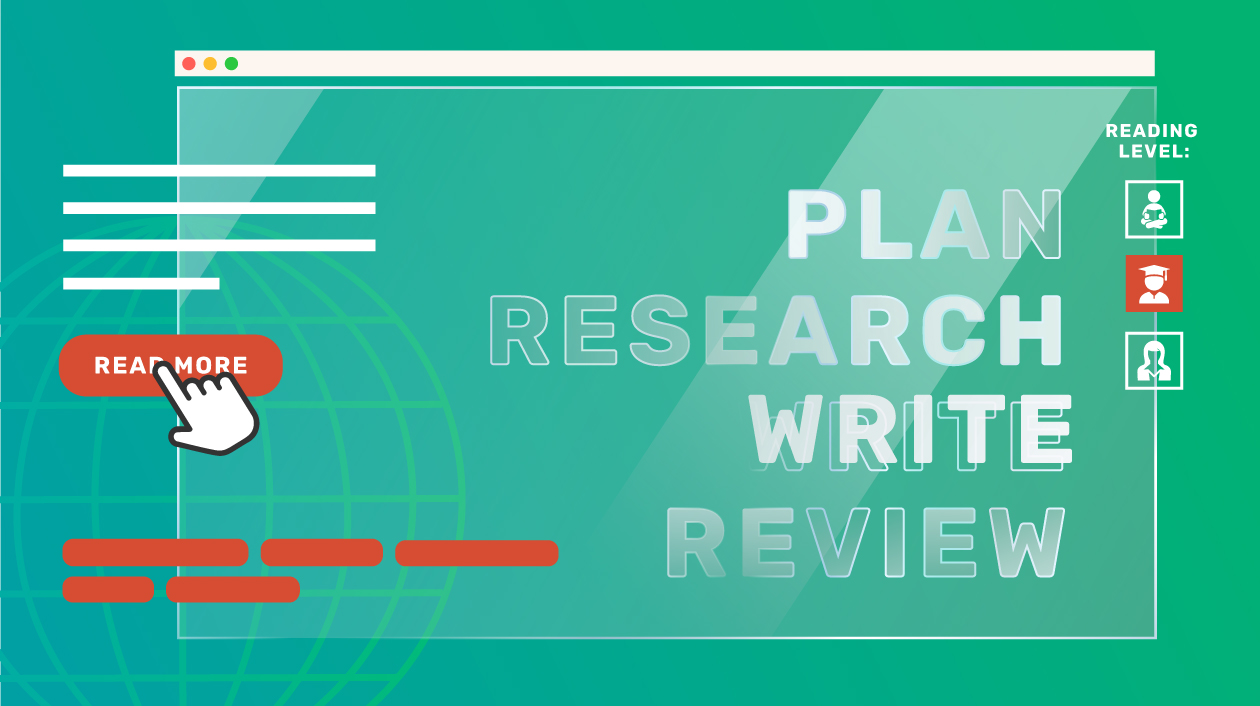5 Steps for Writing Your Website Content
WANT TO SEE MORE LIKE THIS?
Sign up to receive an alert for our latest articles on design and stuff that makes you go "Hmmm?"
Writing for web doesn’t have to be so hard
Copy is one of the most important parts of a website visitor’s experience. A good headline can stop a distracted browser from flipping to their next tab. A compelling, educational explanation can qualify a lead. And a clear button label can convert a prospect into a customer.
Yet the unique, attention-based constraints of web content make it hard to write. That headline has to capture interest in seven words or less. You have to craft that compelling explanation in 30 words, and there’s only three available for that all-important button.
Writing for the web is tough, but like all other forms of writing, a solid process can make it a bit easier. Here’s our five-step process for writing memorable website content that converts.
Step 1: Plan
The blank page is intimidating. That’s why the best writers don’t start with one. Instead, they take a moment to plan what needs to be written.
The goal of this step is to gather the materials required for accurate and authentic content. Start by listing what needs to be rewritten on your website. Your list could include entire web pages, single headlines, or assorted paragraphs scattered throughout your site.
Once you know what you need to write, you can start gathering source material for the new content. Brand or editorial guidelines will have details about your company’s mission and tone. Pitch decks can be helpful for identifying important product benefits. And your coworkers can help explaining complex services — they’re your subject matter experts.
Tips to get you started:
- Read every page on your website. There, you’ll either find content that needs to be rewritten or valuable source material.
- Inventory the components that are used to build your webpages. These are the content blocks that you’ll use to share your new content. Know how much text each module holds will make the writing step more efficient.
- List what you know, and what you don’t, about each item to be written. This will help you set research priorities in the next step.
Step 2: Research
While you likely know a lot about your company, you may not be a deep subject matter expert on its every facet. That’s okay! The goal of this step is to become conversant in the areas where you have knowledge gaps.
Industry blogs or publications are a good resource for technical concepts and terms. Company reviews, forums, and social media are great for specific language and turns of phrase. They’ll help you speak in your customers’ language once you get to the writing phase.
Yet your coworkers are your most valuable resource. Schedule time to chat with team members who have expertise in an area you don’t. Interviewing them will help you hone in on specifics about their work and how it helps your customers.
Tips to get you started:
- Talk to coworkers who have customer-facing roles. Product managers and business development associates can help you identify what’s important to your customers.
- Make a list of questions before your conversation. This will help you keep focused on what you need to learn.
- Ask your coworker to tell you a story. “Tell me about a conversation you’ve had with a client that has stuck with you.” Anecdotes ground the conversation in reality and not meaningless buzzwords.
Step 3: Write
The goal of this step is simple: create website content. But it’s the most challenging step to execute. Writing is intimidating, and it’s always hard (even for professional writers).
Fortunately, the knowledge you’ve gained through planning, research, and interviewing will help. By now, you should feel confident that you understand the industry you’re writing about. If you don’t, you know what source materials and co-workers to turn to. You’re also armed with language and turns of phrase from your interviews. You know what words and ideas will resonate with your audience.
Practice will help even more. So shake off the scaries, open your component list, and begin.
Tips to get you started:
- Don’t start with the headline at the top of homepage. Think of it this way: You don’t write the title of the book until you’ve written the book.
- The more overwhelming your copy is, the less people will read. Your component guide will help you write in small chunks instead of a long-form essay. Even so, once you have a first draft, cut it in half. Rewrite it, and then cut it in half again.
- Remember that writing web copy is an exercise in prioritization. Ask yourself these two questions:
- If someone was going to take away 3 ideas from this page, what would they be?
- What should the reader to remember after they leave the page?
Step 4: Review
Professional writers write a LOT. They draft, edit, rewrite, and edit again and draft again.
Once you have a first draft, resist the temptation to pop it in to WordPress and hit publish. At minimum, re-read it yourself. Look for misspellings, missing words, and misplaced commas.
Even better, send your copy to your coworkers, and ask for their feedback. They’ll be able to tell you if the content is accurate and can be a helpful gut-check that it sounds on-brand.
Tips to get you started:
- Let your first draft sit for a bit before you re-read it. Distance can be helpful for recognizing missing ideas and confusing sentences.
- Read it out loud. If a sentence is hard to say, it’ll be hard to read, too.
- Use an editing tool. Editors like Hemingway help ensure your copy is clean, clear, and understandable.
- Make sure it sounds human. AI tools are great at generating ideas. They are not good at writing copy below a post-graduate reading level. Plus, sounding like a bot can breed distrust and skepticism among your customers.
Step 5: Publish
Congratulations! You’ve reached the final step. Go ahead, paste your newly written website content into WordPress, and hit the publish button!
Write memorable copy that converts
Writing website content isn’t easy, but it doesn’t have to be hard. Humility, patience, and a solid methodology will lead to copy that has impact (and converts). And if you get stuck, just reach out! We’re happy to help you along.



